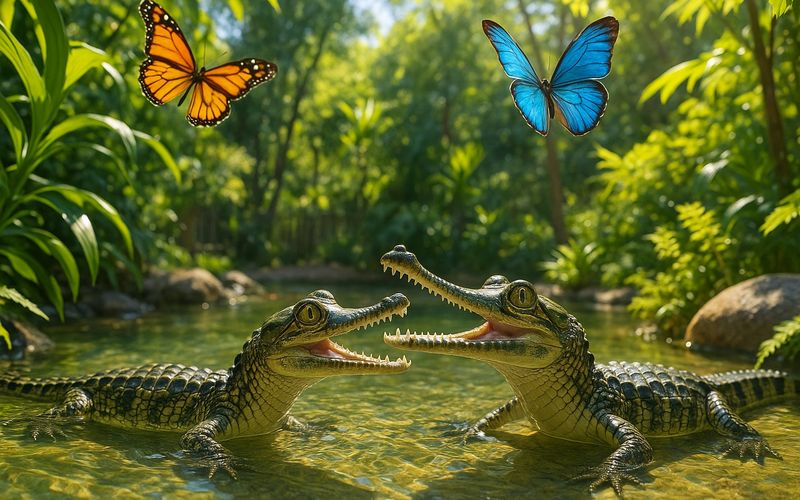The Fort Worth Zoo is marking a milestone in wildlife conservation with the successful hatching of two critically endangered gharial crocodiles this summer — its third consecutive year achieving this feat.
The zoo remains the only institution in North America to have produced multiple gharial offspring and the only one to do so three years in a row.
The gharial, a large and distinctively long-snouted crocodilian species, is listed as critically endangered by the International Union for the Conservation of Nature (IUCN). This summer’s hatchlings emerged on June 5 and June 11 from eggs laid by a female whose genetic line had not previously contributed to hatchings, a major step forward in diversifying the species gene pool in managed care.
“To have continued success for a third year in a row means that in addition to having more of these beautiful and imperiled crocodiles for the future of the species, we are able to further refine our breeding, incubation, and hatchling husbandry techniques as each year informs us more and more,” said Vicky Poole, associate curator of ectotherms at the Fort Worth Zoo.
The zoos breeding success follows nearly 15 years of dedicated effort to grow the gharial population and ensure long-term genetic diversity. Gharials, native to river systems in the Indian subcontinent, are especially vulnerable due to habitat destruction, pollution, and river fragmentation. Their decline in the wild has made successful captive breeding programs like Fort Worths all the more critical.
The gharial habitat at the zoo, located in the Museum of Living Art, was designed in 2010 specifically to support conservation breeding. Features include temperature-controlled water, heat coils in the sand to mimic natural nesting conditions, and a gently sloped shoreline to accommodate the species unique mobility needs.
While the newly hatched gharials measure just over 12 inches now, they will eventually reach massive sizes — adult males can grow up to 16 feet long and weigh nearly 1,500 pounds. The hatchlings will remain behind the scenes for now, joining the 2023 and 2024 cohorts for close monitoring of their growth and development. The zoo is currently exploring plans to build a dedicated public habitat for the young gharials in the future.













